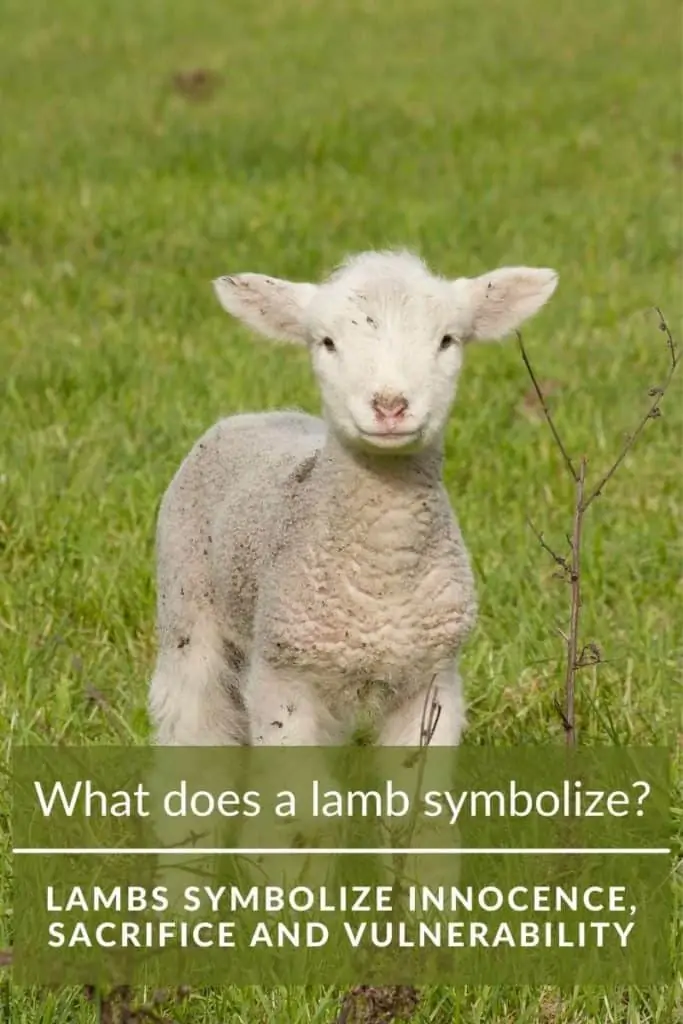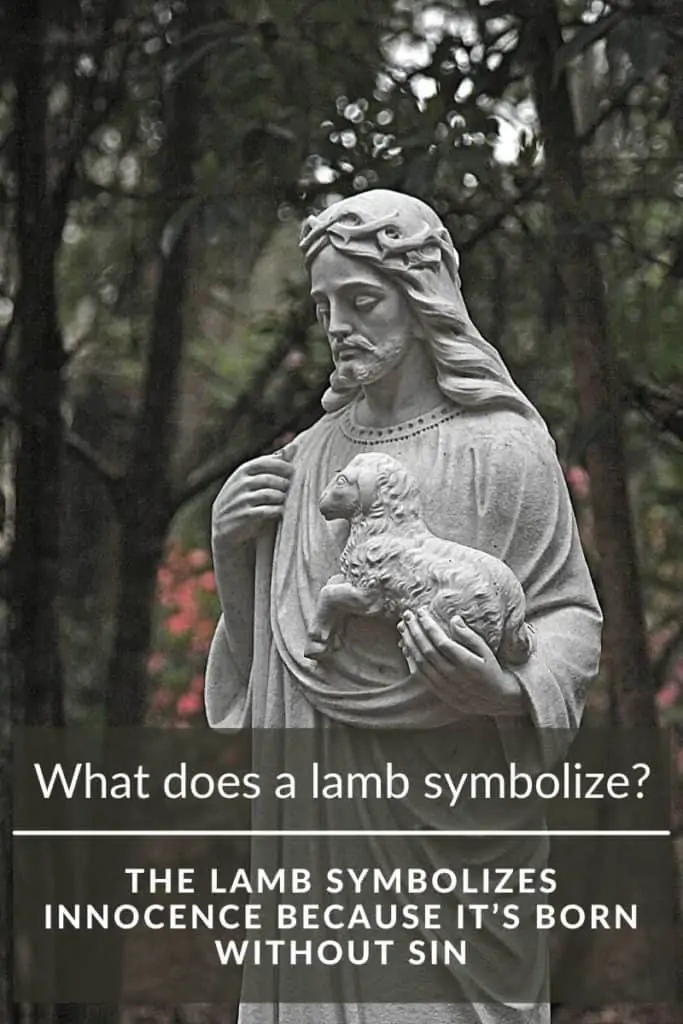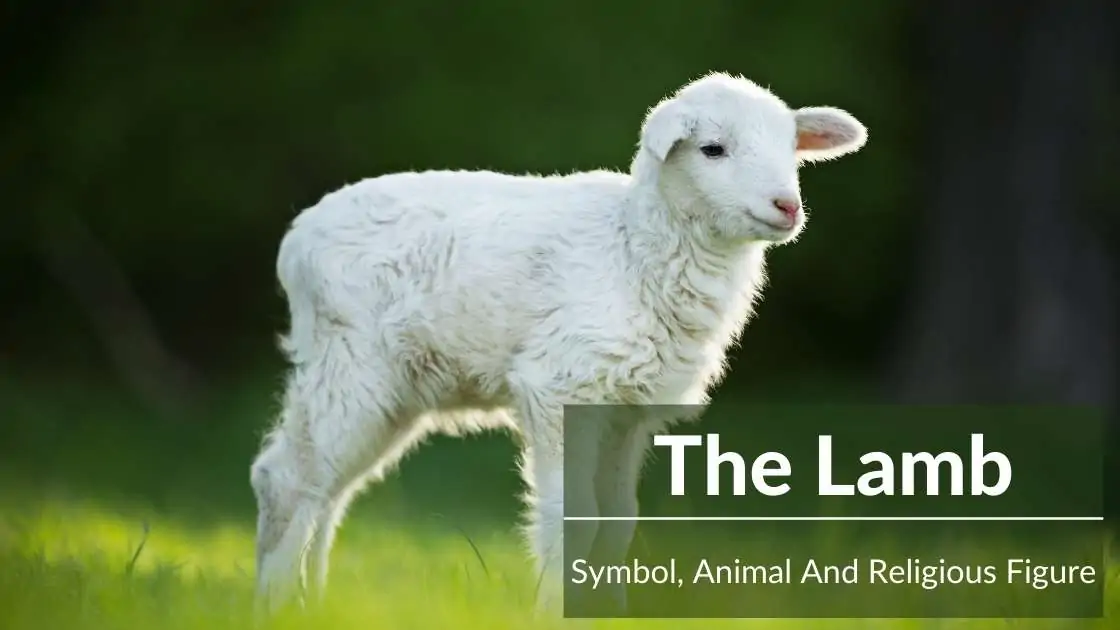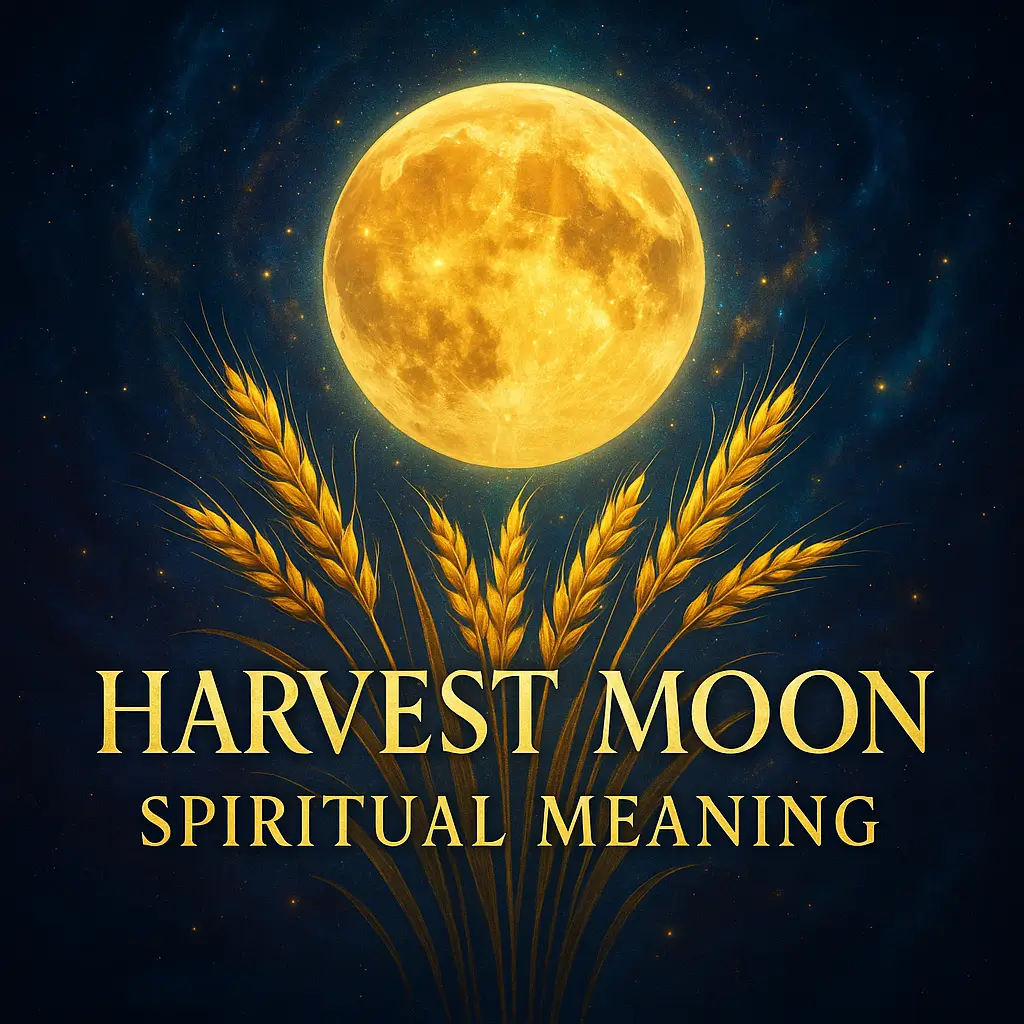In nearly every religion, the lamb is a symbol of innocence and purity. It has been used to represent Jesus Christ in Christianity, due to its status as an animal that is slaughtered for food on the holiday of Passover. The lamb also has many other meanings throughout history and in various cultures around the world. For instance, it’s often thought to be a symbol of innocence because lambs are born without sin – not yet tainted by human nature.
Lambs have been a frequent mention in many religious books and traditions. In each of these religions, lambs symbolize different things. Lambs are weak and lack any defense, especially when they are alone and not protected by the parent sheep. They are easy prey for the predators so they require guidance to protect themselves against the dangers hovering around them. It is due to these traits of lambs that they have been used as symbols for various traits of human beings and their life. In this article, you will learn the lamb symbolism, the spiritual and religious meaning of lambs, the lamb of god, and the lamb totem.

Table of Contents
- 1 What does a lamb symbolize?
- 2 Spiritual meaning
- 3 Lamb symbolism in different religions
- 4 Why are lambs slaughtered in religious gatherings?
- 5 Lamb of God symbol
- 6 The totem animal
- 7 Conclusion
- 8 [Video] Cute Lamb Compilation
- 9 Frequently Asked Questions
- 9.1 Why is the lamb a symbol of Jesus Christ in Christianity?
- 9.2 What does lamb symbolism represent in different religions?
- 9.3 What is the spiritual meaning of a lamb as a totem animal?
- 9.4 Why do Muslims sacrifice lambs during religious observances?
- 9.5 How do lambs symbolize vulnerability and weakness?
- 9.6 What role does herd behavior play in lamb symbolism?
- 9.7 What is the significance of the Lamb of God in Christian theology?
- 9.8 How does lamb symbolism differ between Christianity and Judaism?
- 9.9 Why are lambs considered symbols of innocence and purity?
- 9.10 What does the practice of annual lamb sacrifice represent spiritually?
What does a lamb symbolize?
In ancient Greek and Roman philosophies, lambs symbolize sacrifice and vulnerability. They have been used as a sacrifice by human beings to reach closer to God or their higher self. Since lambs are characteristically vulnerable to hunting predators and need constant guidance from their parents till they turn one, lambs symbolize vulnerability. Lambs signify purity and innocence as well. It is because lambs, being babies, are new to the world and lack any knowledge about the working of this world. They are fresh and free from sins, unlike other creatures of the existing world.
Lambs can also symbolize herd behavior. This is because they always follow a herd of sheep to stay protected and hidden from the eyes of predators. It can represent a sense of naivety and lack of understanding to form opinions rather than following pre-existing, rootless beliefs.
A lamb is also often a symbol of innocence and purity. It has been used to represent Jesus Christ in Christianity, due to its status as an animal that is slaughtered for food on the holiday of Passover. The lamb also has many other meanings throughout history and in various cultures around the world. For instance, it’s often thought to be a symbol of innocence because lambs are born without sin – not yet tainted by human nature.
The shepherd’s delight in the sheep, and its gentle nature which can be seen as meekness makes it an excellent representation of Christ. It also stands to represent sweetness and forgiveness (read more about the symbolism of forgiveness); qualities that are both divinely given to us by God Almighty himself! As such, this animal has been utilized throughout Christian history as one means among many through which we may better understand who our Savior truly was – not just some historical figure from centuries ago but rather Jesus Himself incarnate before mankind and thus learn more about Him.
Lambs have been a frequent mention in many religious books and traditions. In each of these religions, lambs symbolize different things. Lambs are weak and lack any defense, especially when they are alone and not protected by the parent sheep. They are easy prey for predators so they require guidance to protect themselves against the dangers hovering around them. It is due to these traits of lambs that they have been used as symbols for various traits of human beings and their life.
Spiritual meaning
There are many spiritual and religious meanings for lambs. The most common one is that they represent sacrifice, vulnerability, innocence, and purity – traits that prevail in Jesus Christ himself! Lambs signify a number of different things in Christianity such as meekness (gentleness), sweetness, or forgiveness. They have also been used to symbolize herd behavior because they always follow sheep for protection against predators (check also our post about sheep symbolism).
As a spirit animal, the lamb also means innocence. The lamb needs you to overcome the harshness of the world and relearn the inspirations and ideals associated with a positive and happy working in the world. It means that you should put an end to the negativities brewing inside you and see the goodness of the world.
The spiritual meaning of the lambs can also be your confirmation of the rules and principles of society. Lambs are docile creatures and tend to follow the large herds of sheep. So it can mean that you are following the rules posed by society.

Lamb symbolism in different religions
In Christianity and Islam, lambs symbolize purity and sacrifice, both of which are two extremely important pillars of the religion. It can also represent the innocence of the god himself. It is mentioned in the religious scriptures that the lambs can be sacrificed and submitted to the god to fulfill a purpose or reach a higher level of oneself. Sacrificing a lamb has become a yearly tradition, especially among the Muslims, as a form of thanksgiving to God or asking Him for granting the wishes.
In the book of revelation, the lamb symbolizes strength and the focal point of all the heavenly worship. It has a very famed image as a symbol for the crucifixion of Jesus Christ.
Christianity
Christian tradition has used lamb symbolism to represent a number of different things. Perhaps the most famous usage is as an analogy for Jesus Christ, referring to his status as “the good shepherd” and also how he was sacrificed during Passover.
The lamb symbolizes innocence in Christianity because it’s born without sin – not yet tainted by human nature. It can stand for meekness (gentleness), sweetness, or forgiveness. As such, this animal has been utilized throughout Christian history as one means among many through which we may better understand who our Savior truly was – not just some historical
In the Christian religion, lambs represent sacrifice – Jesus Christ’s death on Passover for sins of mankind; meekness (gentleness), sweetness or forgiveness- these are traits of lamb that have defined its symbolic meaning throughout history. Lambs also stand to signify pure innocence because they lack any knowledge about this world and therefore cannot be tainted by human nature. They can also represent herding behavior due to their tendency to follow a herd of sheep at all times for protection against predators and guidance during travel.
Muslim culture
Lambs were often mentioned in Islamic scriptures too which gives them importance with regards to spirituality and religious significance among Muslims. In Islam, lambs are thought to represent the significance of sacrifice. The lamb is what every Muslim tries to resemble in their lives and deeds by sacrificing all that they have for Allah who will reward them with his mercy on Judgement Day.
Judaism
In Judaism, a lamb symbolizes sacrificial animals which were used at Passover where God spared Israel from destruction as punishment for Egyptian brutality against Hebrews enslaved there – this act became known as Pesach observance in Jewish culture during ancient times.
Buddhism
In Buddhism, the lamb is a symbol of purity because it has not yet been sullied by human nature. This implies that Buddhists believe in reincarnation and transmigration of souls which will lead to lives as either humans or animals depending on how well they lived their previous one.
Hinduism
Hindus believe that just like humans, all animals are born with no knowledge about this world and cannot be tainted by human nature – they can also represent herding behavior because lambs tend to follow herds of sheep at all times for protection against predators or during travel.
RichardAlois recommends:
[amazon box=”B07HQZRCDJ,B01FG0447S,B07VL9B7QN” grid=”3″ link_id=”1368″]
Why are lambs slaughtered in religious gatherings?
There are various reasons why lambs may be slaughtered in religious gatherings. The most common is to fulfill a requirement or request of the religion’s god – this could be through prayer, sacrifice, or some other form of worship. Another reason includes an act of thanksgiving and asking God for granting prayers and wishes. In Islam, sacrificial animals such as lamb were used at Passover where Jewish people took refuge from destruction by the punishment inflicted on them during ancient times because they made slaves out of Hebrews enslaved in Egypt.
Lamb of God symbol
Jesus Christ is known and symbolized as the Lamb of God. It is because he sacrificed himself at the feet of God to pay for the sins committed by the people of this world. He sacrificed himself so that the people could live forever by paying him as the price for their sins.
People sacrifice a lamb every year as their temporary cover for all the sins committed by them throughout the year, either knowingly or unknowingly. It is believed that god forgives the sinners in exchange for the blood offering.
The totem animal
Lambs symbolize the possibility of the existence of purity in human beings. It can also represent their vulnerability to the approaching negative changes and unexpected movements coming their way.
The lamb totem is also oftentimes associated with the pastoral idea because they represent innocent animals that do not know what this world has to offer yet. The danger in lambs comes from their inexperience – it can be easy for them to get lost or killed by predators during travel which means being herded at all times for protection against these forces.
Conclusion
Lambs are considered the symbol of innocence, purity, vulnerability, strength, naivety, and sacrifice. In the religious books of Christianity and Islam, lambs have been marked as a symbol of sacrifice by the people for their sins done by them. There are festivals when the lambs are sacrificed to the god to bring prosperity, happiness, and good luck to the households. On Easter, Jesus Christ is frequently mentioned as the Lamb of God because he gave his life to pay for the sins committed by his followers so that they could live happily forever. Also, the lamb made it on our list: symbolism for pain – check it out!
[Video] Cute Lamb Compilation
Frequently Asked Questions
Why is the lamb a symbol of Jesus Christ in Christianity?
The lamb represents Jesus Christ because of its innocence, purity, and sacrificial nature. In Christian tradition, Christ is called the Lamb of God, symbolizing his sacrifice during Passover to atone for humanity’s sins, embodying meekness, sweetness, and forgiveness.
What does lamb symbolism represent in different religions?
Across religions, lambs symbolize sacrifice, purity, and innocence. In Christianity and Islam, they represent atonement and thanksgiving. In Judaism, they commemorate Passover. In Buddhism and Hinduism, lambs symbolize purity due to their untainted nature, representing souls free from worldly corruption.
What is the spiritual meaning of a lamb as a totem animal?
The lamb totem represents purity, innocence, and vulnerability to negative forces. It symbolizes the need to overcome worldliness, embrace positive ideals, and acknowledge human fragility. The totem encourages releasing negativity while recognizing societal rules and the importance of community protection.
Why do Muslims sacrifice lambs during religious observances?
In Islam, lamb sacrifice represents devotion to Allah and thanksgiving for blessings. Muslims sacrifice lambs to honor God’s mercy, seeking His reward on Judgment Day. This practice demonstrates willingness to sacrifice worldly possessions for spiritual fulfillment and divine grace.
How do lambs symbolize vulnerability and weakness?
Lambs lack natural defenses and are easy prey for predators, especially when separated from protective parent sheep. This physical vulnerability makes lambs ideal symbols for human weakness, dependence on guidance, and the need for community protection against life’s dangers and hardships.
What role does herd behavior play in lamb symbolism?
Lambs follow sheep herds for protection, symbolizing conformity to societal rules and collective behavior. This represents both safety in numbers and potential naivety—following established beliefs without independent thought, reflecting human tendencies toward social conformity and group reliance.
What is the significance of the Lamb of God in Christian theology?
The Lamb of God symbolizes Jesus Christ’s ultimate sacrifice for human sins. His blood offering cleanses believers’ sins, allowing eternal redemption. This central Christian concept emphasizes Christ’s gentle nature, unconditional love, and redemptive power through sacrificial death and resurrection.
How does lamb symbolism differ between Christianity and Judaism?
In Christianity, lambs symbolize Jesus Christ and spiritual sacrifice for redemption. In Judaism, lambs commemorate Passover, representing God’s protection of the Hebrews from Egyptian plagues. Both religions emphasize sacrifice, but Judaism focuses on historical deliverance while Christianity emphasizes spiritual salvation.
Why are lambs considered symbols of innocence and purity?
Lambs are newborns without knowledge of the world, born free from sin and untainted by human nature. Their youth, naivety, and lack of worldly corruption make them perfect representations of pristine innocence, spiritual purity, and divine blesslessness across multiple religious and spiritual traditions.
What does the practice of annual lamb sacrifice represent spiritually?
Annual lamb sacrifice represents believers seeking God’s forgiveness for yearly sins and offering thanksgiving. The blood offering symbolizes atonement and divine mercy. This ritual reinforces spiritual commitment, acknowledges human fallibility, and renews covenant relationships between worshippers and the divine.



